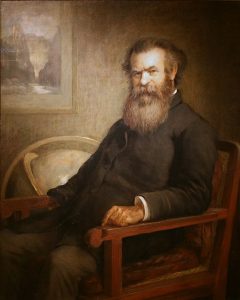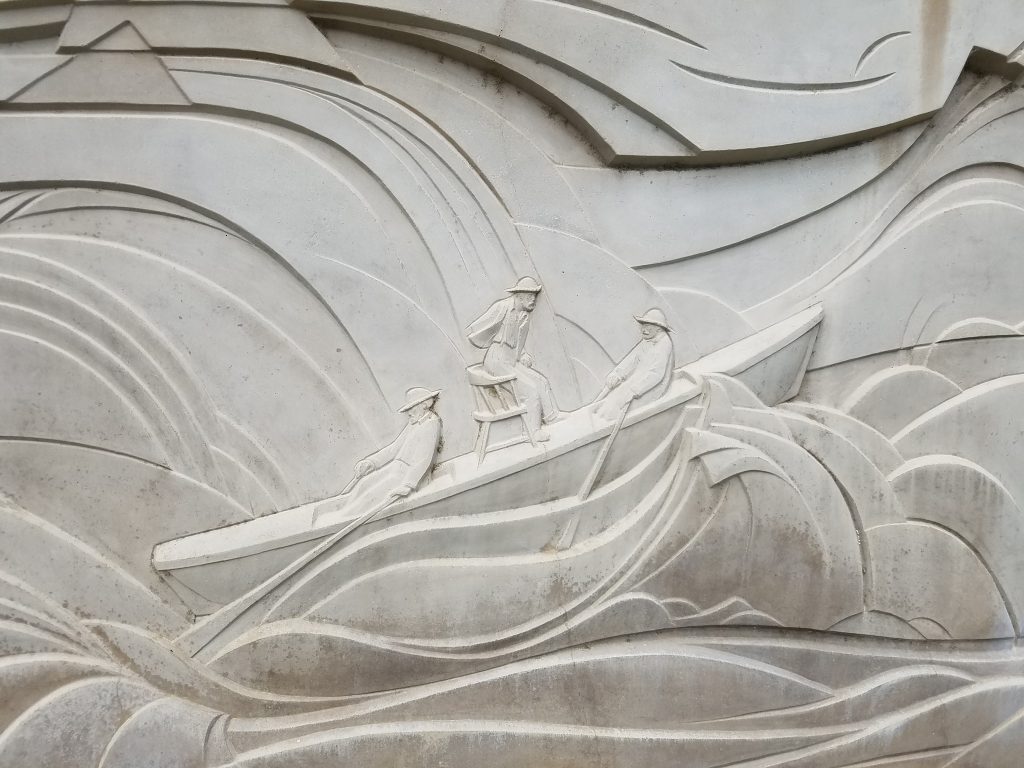ECW Weekender: John Wesley Powell River History Museum
 If you’re ever traveling cross-country on Interstate 70 through Utah and Colorado, you’ll reach Green River, Utah, either just before or after crossing the “hundred miles of nothin’.” Here, in this little river town, you’ll find a local museum named after a Civil War veteran and highlighting his life, military services, and post-war explorations. Why is this museum here? Who was it named after? And what significance does it have to Civil War studies?
If you’re ever traveling cross-country on Interstate 70 through Utah and Colorado, you’ll reach Green River, Utah, either just before or after crossing the “hundred miles of nothin’.” Here, in this little river town, you’ll find a local museum named after a Civil War veteran and highlighting his life, military services, and post-war explorations. Why is this museum here? Who was it named after? And what significance does it have to Civil War studies?
John Wesley Powell – the son of an itinerant Methodist minister – was born in 1834 in New York but spent his childhood in Ohio, Wisconsin, and Illinois. Science studies fascinated him, and he had the privilege of learning from George Crookham, who was an amateur naturalist and scholar. During the 1850’s, he traveled along the Mississippi, Illinois, and Ohio Rivers, studying geology and natural history and collecting for fossil collections. Powell’s efforts and studies were recognized and he was elected to the Illinois Natural History Society. He taught school to finance his ventures and education. Powell took courses at Illinois Institute, Illinois College, and Oberlin College, but he did not received a degree.

When the Civil War started, Powell enlisted in the 20th Illinois Infantry, commissioning as a second lieutenant with a enviable skill set in topography, cartography, and engineering. He helped recruit the 2nd Illinois Light Artillery’s Battery F and became its captain. At the Battle of Shiloh in April 1862, Powell was badly wounded in his right arm; surgeons amputated his injured limb, but incorrect surgery techniques resulted in lifelong pain from the injury. Captain Powell returned to his family to recover and undertook recruitment in his home region. He returned to active service in February 1863, commanding artillery batteries for General William T. Sherman and serving on General George H. Thomas’s staff. Powell fought at the Siege of Vicksburg, Atlanta Campaign and Battle of Nashville.

After the war, Powell taught natural sciences at Illinois Wesleyan University and Illinois State Normal University. By 1867, he served as curator for the Illinois Natural History Society and was recognized as a leader in his field of study. General Sherman may have encouraged Powell to explore, and the one-armed veteran headed into the west to map and discover. On his first expedition, Powell journeyed to Colorado, climbed Pikes Peak, and scaled the Front Range of the Rocky Mountains.
Powell realized no one really knew about the rivers in the American southwest. He dreamed of traveling and charting this area. In 1868, he and ten others (some of them fellow Civil War veterans) started on the Green River in Wyoming on an expedition that would take them down the Colorado River. On August 5th, they entered the Grand Canyon – charting the river and becoming the first known Americans to see the canyon from the river (and survive to tell the tale). Morale among the explorers became dangerously low as rapids swamped and destroyed boats and provisions. In the Colorado River’s fierce rapids, Powell sat on a chair in his boat, strapped in, and either directing or helping to steer with his left arm. Waves, rapids, and hardships would not stop this Civil War veteran in his quest to map and make important scientific discoveries!

In 1871-72, Powell led another expedition through the Grand Canyon on the Colorado River, this time guiding other naturalists. He wrote about his discoveries and expeditions in a book which was eventually titled The Exploration of the Colorado River and Its Canyons, first published in 1875 and revised in 1895.
John Wesley Powell became the second director of the U.S. Geological Survey in 1881 and held the post until his resignation thirteen years later. When Powell died in 1902, he was buried in Arlington National Cemetery to recognize his military service and extensive scientific research which shaped the understanding and development of the American West.
Serving the Union Army shaped Powell’s life, helping him learn about leadership and creating a life-long physical challenge. Others might have responded the loss of a right army by settling into a comfortable teaching position, but Powell had an unconquerable spirit. Determined, he strapped himself to a chair and forged ahead through some of the worst rapids in the world in a passionate pursuit of science and a desire to understand the native peoples and resources of the West.
The John Wesley Powell River History Museum in Green River, Colorado, celebrates the accomplishments of this remarkable naturalist and veteran. The facility offers a documentary film and displays about Powell’s life and expeditions, as well as details about the local geology, fossil finds, and the River Runner Hall of Fame. There is a small admission fee to see the film and tour the museum, but the entrance gallery and gift shop are open to the public. (Call ahead to check museum hours.)

Be sure to check out the views of the river and admire the cliffs in the distant; it’s a great place for a road-trip picnic. And if you’re in Green River during the summer, be sure to get a melon or two from a local melon stand! They’re some of the best fruit and a perfect treat on a hot travel day.
It’s not a battle site or even a Civil War campsite, but the John Wesley Powell River History Museum celebrates the accomplishments of this Union officer in the field of science and discovery. Pull off Interstate 70 and be surprised by the local history and stories of Civil War veterans who explored the American West.
John Wesley Powell River History Museum
- 765 East Main Street, Green River, UT 84525
- 435-564-3427
- Website: http://johnwesleypowell.com/

John Vernon wrote a wonderful novel about Powell’s explorations called “The Last Canyon.” Vernon manages to capture the beauty of the canyon country in beautiful prose–and he tells a great story while he’s at it!
I grew up in northern Arizona. John Wesley Powell was a major presence in a state at that time blessed with few public heroes. Impossible to visit the Grand Canyon without being aware of at least some of his extraordinary accomplishments.
Lots of bad men and women on the road signs and historic markers in Arizona in those days, not so many heroes. Powell was a useful antidote to the gunfight at O.K. Corral in Tombstone, Yuma Territorial Prison, and other places. [Though General Crook and the Native Americans did get their share of roadside attention.]
Thanks for writing about one of my favorite Civil War soldiers.
Thanks, Rosemary! That’s really fascinating to hear about how Powell is remembered in Arizona history.
It never rains but it pours John Wesley Powell.
A local theatre group (the Circle Theatre Players of the Sand Lake Community Association) for a series of days in September is hosting a special theatrical event — an acting class with Patrick White presenting “Men on Boats”, Written by Jaclyn Backhaus, Directed by Patrick White, it depicts ten explorers, four boats., one Grand Canyon. Men on Boats is advertised as the “trueish” history of an 1869 expedition, when a one-armed captain and a crew of insane yet local volunteers set out to chart the course of the Colorado River. September 14, 15, 21 and 22 at 8 p.m., September 16 and 23, 2016 at 2:30 p.m. I will try to attend so I can share with ECW the extent to which the community drama matched the Grand Canyon adventure. Stay posted.
Unfortunately, it’s not possible to travel cross-country entirely via I-70. The highway, which originates in a “park and ride” in Baltimore, goes only as far as Ft. Cove UT, where it meets I-15.
Good point, Mike. I-70 doesn’t stretch completely across the continent. Thanks for pointing this out.